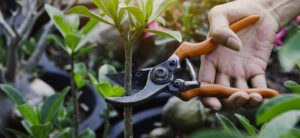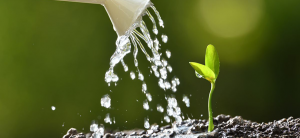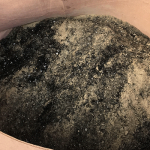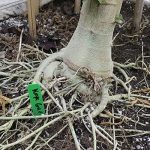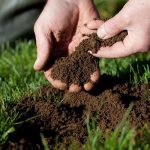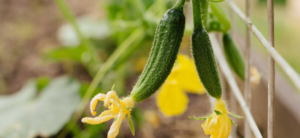
You cannot consider yourself a serious grower if you aren't pruning to increase yield. This variation of high stress plant training simply requires a pair of scissors and a little know-how.
There are more complex methods of plant training that require special techniques such as bending, tying, twisting, and more.
These can deliver impressive results, but there is something to be said for good old fashioned pruning to increase yields.
We will cover the different types of pruning, but first, let’s explain it on a general level.
What is pruning?
Pruning not only increases yield, but it’s also actually an essential garden care task in most cases. If you don’t do anything to control growth, you’ll undoubtedly end up with uneven growth. One cola will likely dominate, leaving you with small popcorn buds throughout the rest of the plant.
Instead, you can use garden scissors to dictate the manner in which your plants grow! Whether you are growing indoors or outdoors, you can see why this is important. But, its especially important if you grow indoors.
You likely don’t have a ton of height to work with. If you’re lucky, you’ll have 6-7 feet of height to grow in. Once you factor in your pots, lights, and the distance you need from your canopy, you have much less than that. This is why you need a means of controlling vertical growth in your plants!
In a closet grow setup, this is an absolute necessity. You won’t be successful unless you can create a flat, even canopy. And, your plant won’t do that on its own. It needs your help, which is where pruning comes in.
Different types of pruning to increase yield
To put it simply, pruning is just cutting off shoots of growth from your plant with scissors or shears.
At its most basic, you will just prune the dominant shoot of growth. But, there are more complex forms of pruning to increase yield that can result in impressive-looking plants with tons of flowering sites! Let’s dig in.
Topping

Topping is a super basic form of pruning that delivers impressive results. It grants your plant access to light in areas that normally wouldn’t get it, while essentially doubling your bud sites with each prune.
Instead of the one dominant cola, you can end up with 4 or more! You can top as many times as you want, but there are diminishing returns at a certain point.
Does topping really increase yield
Some people claim topping does not actually increase yield, because the colas get smaller every time you top. But, it has been shown that the cumulative yield is much heavier when you top your plants. So yes, topping really increases yield.
Because there are multiple colas, each having ample lighting, you end up with much heavier, more efficient plants.
How to top your plants
You should start topping your plants once they have reached around 10 inches, and have at least 4-5 sets of leaves. To be sure, you can examine the plant for signs of secondary growth located near lower nodes. These are an indication your plant can handle a topping.
Then, simply grab the top shoot, and cut if off! Make sure this is the newest, freshest shoot of growth. After a few days, you will see two new shoots of growth at the base of where you topped.
At first your plant will experience some level of shock. It will grow slowly for a bit, but once it rebounds, and these new shoots have developed a few nodes of their own, you can top again! This can take up to a week, sometimes even longer. This is super stressful for your plant, so give it time.
At this point, you’ll have four colas. You can continue topping if you have the space for a huge plant, but your colas will get smaller with each consecutive topping. You can experiment with different topping strategies to find the sweet spot which yields the most.
Fimming
Fimming, or the FIM method, is pretty similar to topping. This strategy sounds pretty strange, but it too can increase your yield.
Whereas you make a complete cut with topping, you only take ⅔ of the shoot of growth with the FIM method. Fimming your plants leads to four new shoots of growth each time you do it.
You can do it more than once, but your rebound time is a bit longer than with topping. So, you need to wait longer in between fimming your plants.
As a grower, it is up to you to determine whether the FIM method or topping yields better results. You can essentially get the same results with each, but FIM does have the advantage of getting twice as much done with one cut.
Lollipopping
Lollipopping is a type of plant pruning where you focus on removing all lower growth.
With topping and fimming, you focus on cutting the new shoots of growth to promote new bud sites. With lollipopping, it’s about maximizing current bud sites by removing others.
The thought process behind lollipopping is simple. The lower branches on your plant do not get the same amount and quality of light as the top branches do.
As you likely know, flowers that don’t receive adequate lighting will never fatten up to their full potential.
So, some growers will simply cut off all bottom growth before flower! By cutting off these branches, the plant can focus all its energy on the top of the plant, where flowers actually receive light. This results in a lollipop shape, hence the name.
Does lollipopping increase yield?
Many growers have increased yields by lollipopping. We know enough about plant science to support the logic behind this type of pruning.
What’s even cooler is that you can combine lollipopping with topping or fimming. As you’ll learn below, you don’t lollipop until right before flower. So, early in veg, you can do other types of pruning to increase yield!
How to lollipop your plants
Lollipopping is simple. The best time to do it is right before you make the switch from veg to flower (18/6 to 12/12). You don’t really need to worry about it throughout veg, like with topping or fimming.
You need to step back and loop at the canopy of your plant. You can easily assess which areas do and do not get light. You can draw a line across your canopy, and cut all leaves below it.
One mistake growers make is cutting lower bud sites off the branches they are keeping. Don’t cut off bud sites you don’t need to cut off!
Plant pruning tips
These are the main ways you can prune to increase yield, but now, we want to share some tips with you.
Can you prune during flower?
You should avoid pruning during flower. Pruning can be stressful for your plant, and pruning may slow bud development.
You can remove large fan leaves if they are getting in the way of flowers, or if you feel they are using too much energy. But don’t top or FIM your plants during flowering.
Don't overprune your plants
Don't get carried away with pruning. More often than not, less is more! Just remove what needs to be removed, and know that the more pruning you do, the more stressed your plant will be. Be sure to give your plant a good feeding after you prune so it can recover.
Caring for scissors and shears

A good pair of garden scissors should last you a very long time if you take care of them.
You need to take good care of your scissors, and keep them sharp.
A dull pair of scissors or shears can damage your plant. These scissor sharpeners are inexpensive and will keep your pruning process efficient.
Every so often, make sure to clean your scissors. If you are pruning a lot of plants, it’s not a bad idea to quickly clean your scissors between plants.
This will prevent cross contamination, and spreading any diseases one plant may have.
Our scissor cleaners will easily clean sticky, gooey resin off your blades, and are totally safe. We even have natural options!
What are the best garden scissors?
When it comes to garden scissors and pruning shears, there really isn’t much to it.
The big differences between most scissors and shears are the ergonomic handle each has, as some are more comfortable than others. This mostly comes down to personal preference.
If you are simply pruning a few plants here and there, you don’t need to overthink this. Just grab a cheap pair and get to work! Here are some of the best brands you can find at Hydrobuilder:
Final thoughts on pruning to increase yield
In summary, there is no excuse not to practice pruning to increase yield. Topping, fimming, and lollipopping are all super easy ways to get more flower.
If you want to learn about plant training, including popular methods such as LST, manifolding, scrOG, SOG, and more, check out our definitive guide!





